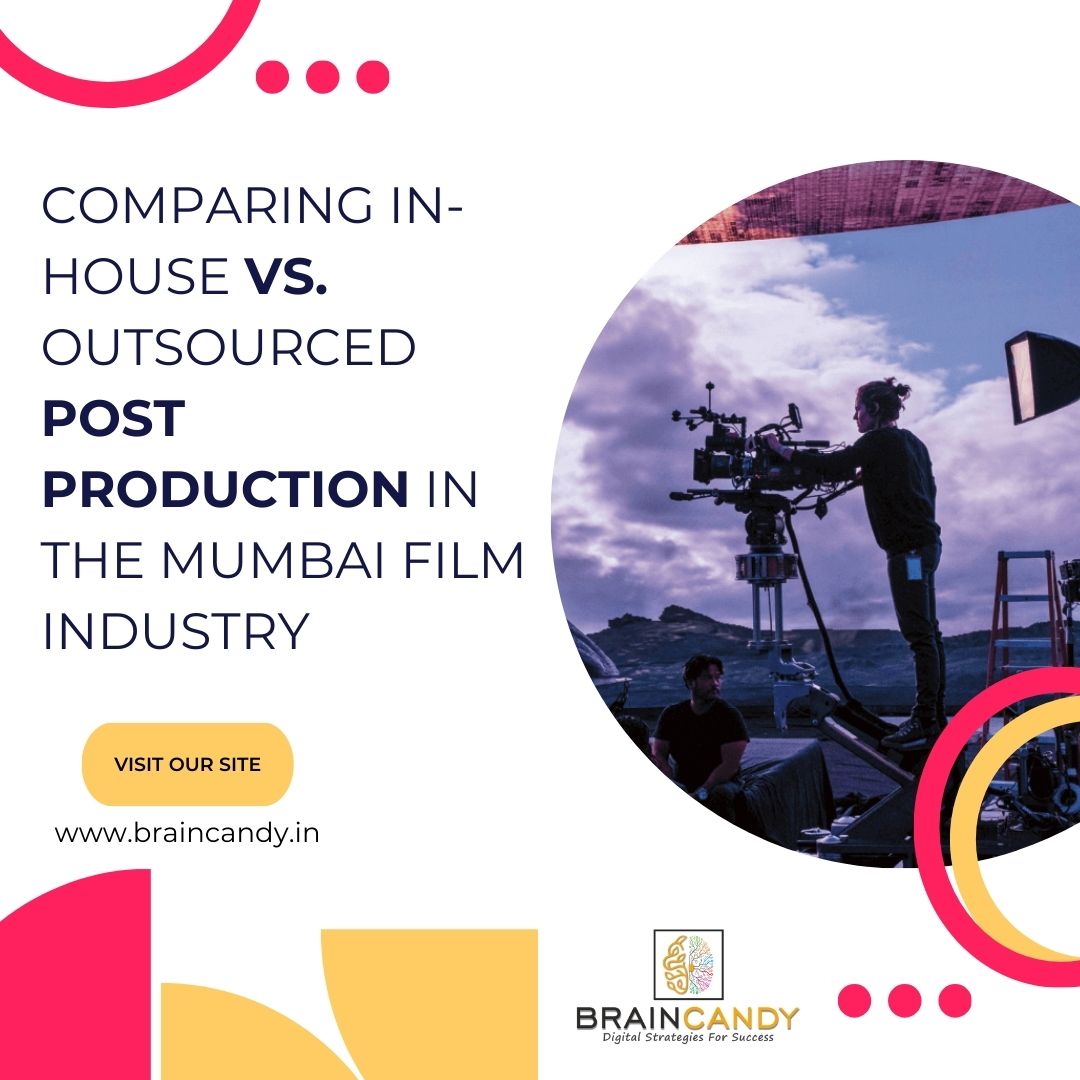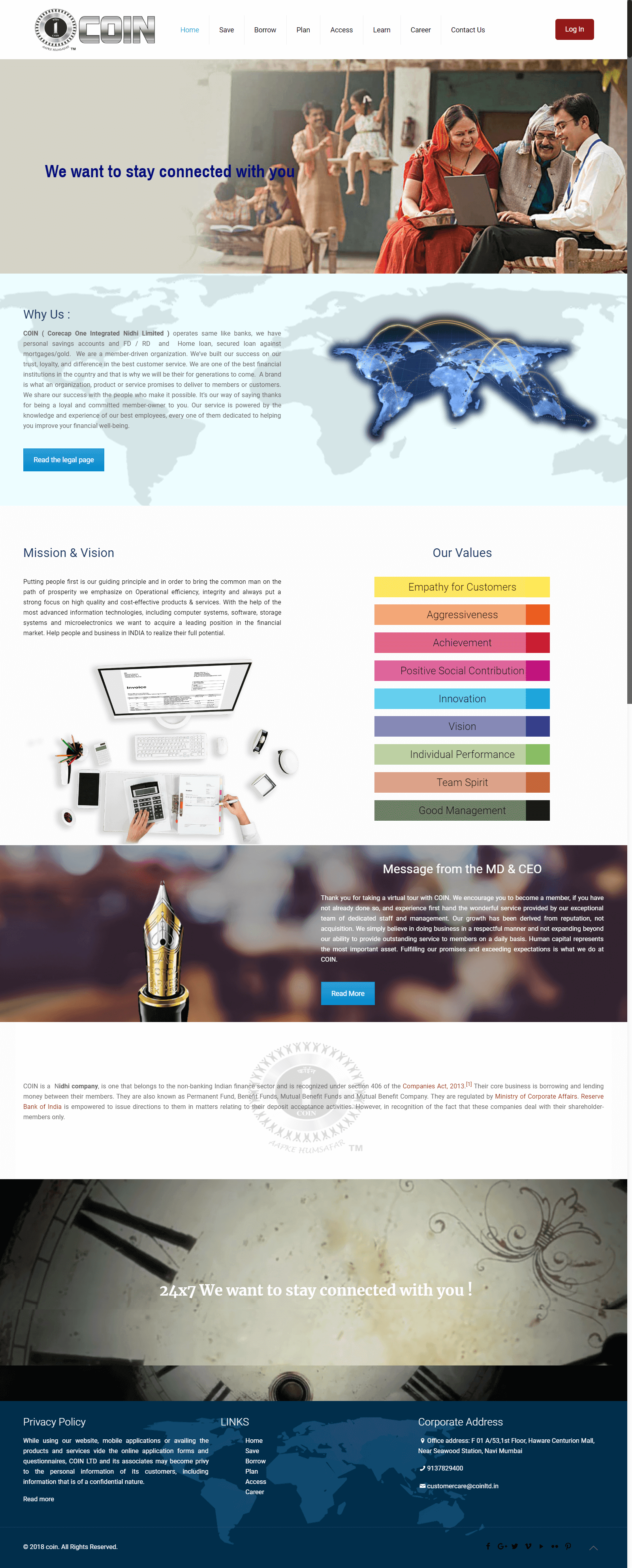- BY braincandy
- POSTED IN Short-Form Video, Uncategorized
- WITH 0 COMMENTS
- PERMALINK
- STANDARD POST TYPE

 The Mumbai film industry has seen a surge in growth, producing over 120 films a year as of 2023. However, even the most successful films face challenges, especially during post-production. Filmmakers grapple with a crucial decision: should they invest in an in-house post-production team or outsource this essential stage? This article explores the benefits and drawbacks of both approaches, equipping filmmakers in Mumbai with actionable insights to navigate this decision.
The Mumbai film industry has seen a surge in growth, producing over 120 films a year as of 2023. However, even the most successful films face challenges, especially during post-production. Filmmakers grapple with a crucial decision: should they invest in an in-house post-production team or outsource this essential stage? This article explores the benefits and drawbacks of both approaches, equipping filmmakers in Mumbai with actionable insights to navigate this decision.
Cost Analysis: In-House vs. Outsourcing
Setting up an In-House Post-Production Team
Creating an in-house post-production team involves several costs:
- Salaries: Average salaries for post-production roles—like editors, sound designers, and visual effects artists—range from ₹25,000 to ₹80,000 per month.
- Equipment: High-quality editing suites can cost ₹5 lakhs or more, depending on the software and hardware specifications.
- Software: Licenses for software such as Adobe Premiere Pro or Final Cut Pro can add another ₹50,000 to your budget annually.
- Infrastructure: Renting a suitable office space can be another significant expense.
Outsourcing Costs
Engaging external post-production houses comes with its own set of costs:
- Basic Fees: Hiring a mid-range post-production house may start around ₹1 lakh for a short film and can go up to ₹10 lakhs or more for a feature film.
- Hidden Costs: Always factor in potential hidden fees, such as extra charges for revisions or additional services.
- Negotiation: Get multiple quotes and clarify what’s included to avoid unexpected costs.
Cost Comparison
Here’s a quick comparison of costs for different project scales:
| Project Type | In-House Costs | Outsourced Costs |
| Short Film (30 mins) | ₹2.5 lakhs | ₹1 lakh |
| Feature Film (90 mins) | ₹10 lakhs | ₹5 lakhs |
Control and Creative Vision: Maintaining Artistic Integrity
Creative Control with In-House Teams
Having an in-house team allows for seamless communication. Directors can provide immediate feedback, ensuring that the film’s vision is executed perfectly. This direct supervision can lead to a tighter alignment with the original concept.
Creative Control with Outsourced Teams
Outsourcing can complicate the creative process. With external teams, important details might get lost in translation. Clear communication is essential. Providing detailed briefs and references helps maintain a consistent vision, but it requires more effort from filmmakers.
Case Study
Consider the film “Dangal,” which had a blended approach. The in-house team managed crucial tasks, while outsourced experts handled specific visual effects. The collaboration resulted in a film celebrated for both its story and technical execution.
Time Efficiency: Meeting Deadlines
In-House Efficiency
An in-house team benefits from established workflows. Team cohesion enhances speed, and everyone understands each other’s strengths.
Outsourcing Efficiency
While outsourcing may offer quick turnarounds, delays can occur, particularly if the vendor is juggling multiple projects. Choosing reliable partners can mitigate this risk.
Tips for Managing Time
- Use Project Management Tools: Software like Asana or Trello can streamline communication and keep everyone on track.
- Set Clear Milestones: Establish deadlines for each phase of the post-production process to avoid last-minute scrambles.
Expertise and Specialization: Accessing Specialized Skills
In-House Expertise
With an in-house team, you can develop specific talents over time. However, this might limit access to varied skill sets. If the team lacks expertise, it can hinder creative expression.
Outsourcing Expertise
Outsourcing opens doors to specialized skills. A dedicated visual effects team or sound designer can significantly elevate the quality of the final product, drawing from a broader talent pool.
Building a Hybrid Model
Creating a hybrid model can combine the best of both worlds. Utilize in-house talent for core tasks while outsourcing specialized functions. This strategy helps maintain quality without compromising budget.
Scalability and Flexibility: Adapting to Project Needs
In-House Scalability
Scaling an in-house team can be challenging. Hiring new talent takes time, and if projects are irregular, maintaining a large team may not be feasible.
Outsourcing Scalability
Outsourcing provides flexibility, allowing you to adjust the scale of your team based on current needs. This adaptability can be particularly beneficial for independent filmmakers with varying project sizes.
Long-Term Sustainability
When considering long-term sustainability, an in-house team requires consistent work to be viable, while outsourcing can adapt to changing project demands without the burden of overhead.
Conclusion: Choosing the Right Approach
Both in-house and outsourced post-production options have unique advantages and disadvantages.
- In-House: Greater control, integrated teams, and a clear creative vision but higher costs and scalability challenges.
- Outsourced: Cost-effective, access to specialized skills, and flexibility, but potential communication challenges and less creative control.
Filmmakers should choose the approach that aligns best with their project type and budget. Understanding your unique needs and resources is key to making this crucial decision. Start evaluating your options today to set your film up for success!












